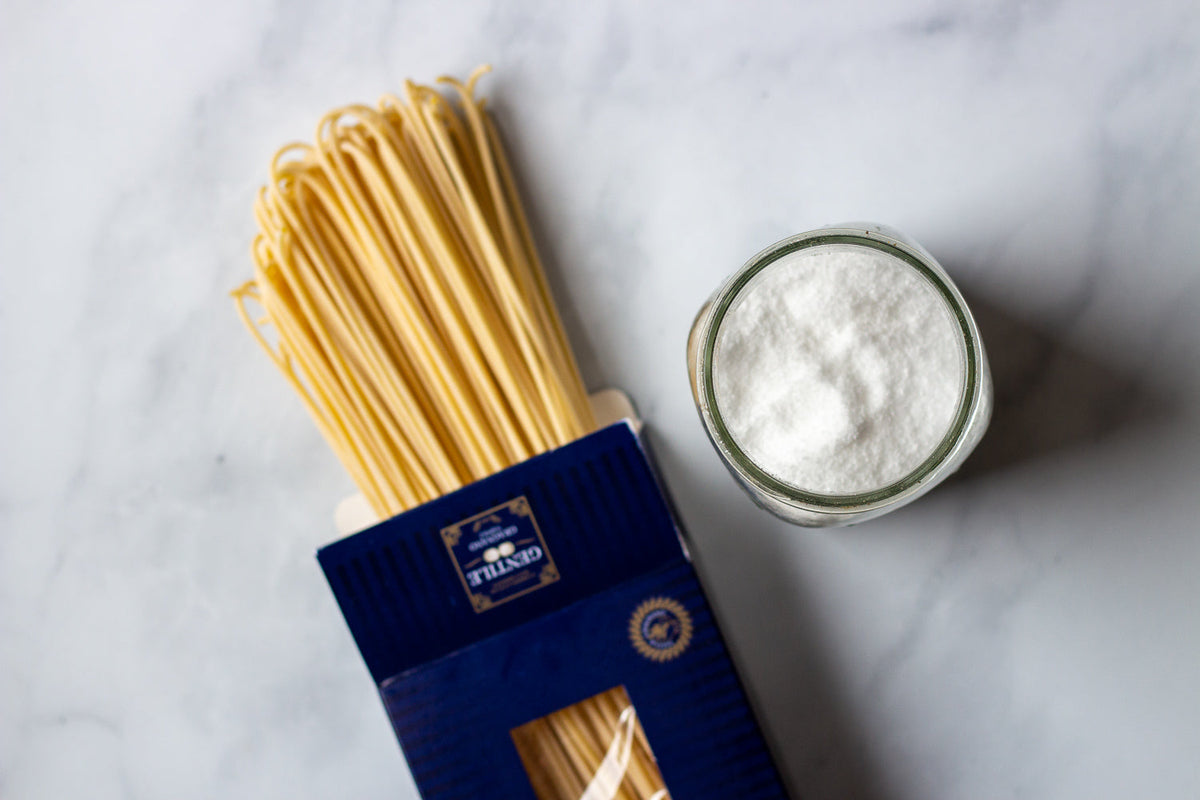
How to Salt Your Pasta Water Perfectly Every Time
|
|
Time to read 3 min
|
|
Time to read 3 min
We’re not sure when “salty as the sea” became a pasta cooking direction, but if there’s one thing chefs agree on, it’s that sea water-style pasta is a recipe for disaster. So, forget what you may have heard as we dive into how much salt you really need for your pasta water.
We’ve scoured books (ciao, Samin!), trusted guides, kosher salt face-offs, and even interviews with famous chefs to get to the bottom of this question. With this step-by-step guide, you’ll have perfectly seasoned pasta in no time.
In truth, you can use almost any kind of salt for cooking pasta (except for iodized). The choice of the q.b. cucina Test Kitchen is Diamond Crystal Kosher Salt, which has a larger, more crushable grain and gives us more control over the amount that we add.
Sea salt, made from evaporated sea water, tends to offer extra depth thanks to residual minerals that linger after evaporation. Sea salt tends to be more expensive than Kosher, so feel free to go for the budget-friendly option.
And now, the crux of the problem. What is the correct amount of salt for pasta water? If you peek inside any Italian kitchen, it’s likely a lot more than you would think.
Our research has shown that experts tend to agree on 2% salinity, a balanced seasoning that adds flavor to your pasta but doesn’t tip into overly salty. Remember: your pasta will get extra seasoning from your sauce pairing, too.
To get your pasta water to roughly 2% salinity, you’ll want to use about two tablespoons of salt per quart of water. (Nota bene: this amount is specific to our Test Kitchen’s salt of choice, Diamond Crystal!) Scale that up per quart of water you use during cooking – you’ll likely want at least four for a batch of pasta.
Wish you could sprinkle your salt crystals with the confidence of a trained cuoco (chef)? Here’s a tip from our test kitchen: for the first few times, take your measuring spoon and actually measure your salt into a small bowl. Next, take that salt and dump it into the palm of your hand.
Get a feel for it – is it about the size of a ping pong ball? Is it a high or low mound? After a few practice rounds like this, you’ll be able to measure directly into your hand by eye and feel alone.
Does it matter when you toss the salt into the water? Answer: not really. Adding the salt before the water comes to a boil will slow down the time to boil a bit, so if you’ve got time on your hands, toss it in when you like. If you wait until the water is fully boiling, add it right before you drop in the pasta, and wait for the water to come back to boil before adding your desired shape. Just keep your pot covered so that your water doesn’t evaporate too much and mess up your careful ratio!
And if you dropped in the pasta but forgot the salt? Don’t worry. Simply add it as soon as you remember. It only takes a couple of minutes for the pasta to absorb the flavor of the salt.
As your pasta cooks, don’t forget to taste! Dip your spoon into the boiling water and take a little splash in your spoon, as though you were tasting a soup for seasoning. If it has a light and pleasant salinity, you’re on the right track.
Just promise us one thing: never, ever rinse your pasta after you drain it. Not only will you wash off the gluten that will help your pasta and sauce cling beautifully together, you’ll also be getting rid of all that great seasoning you just perfected.
What pasta cooking tricks do you swear by in your kitchen? Let us know!
